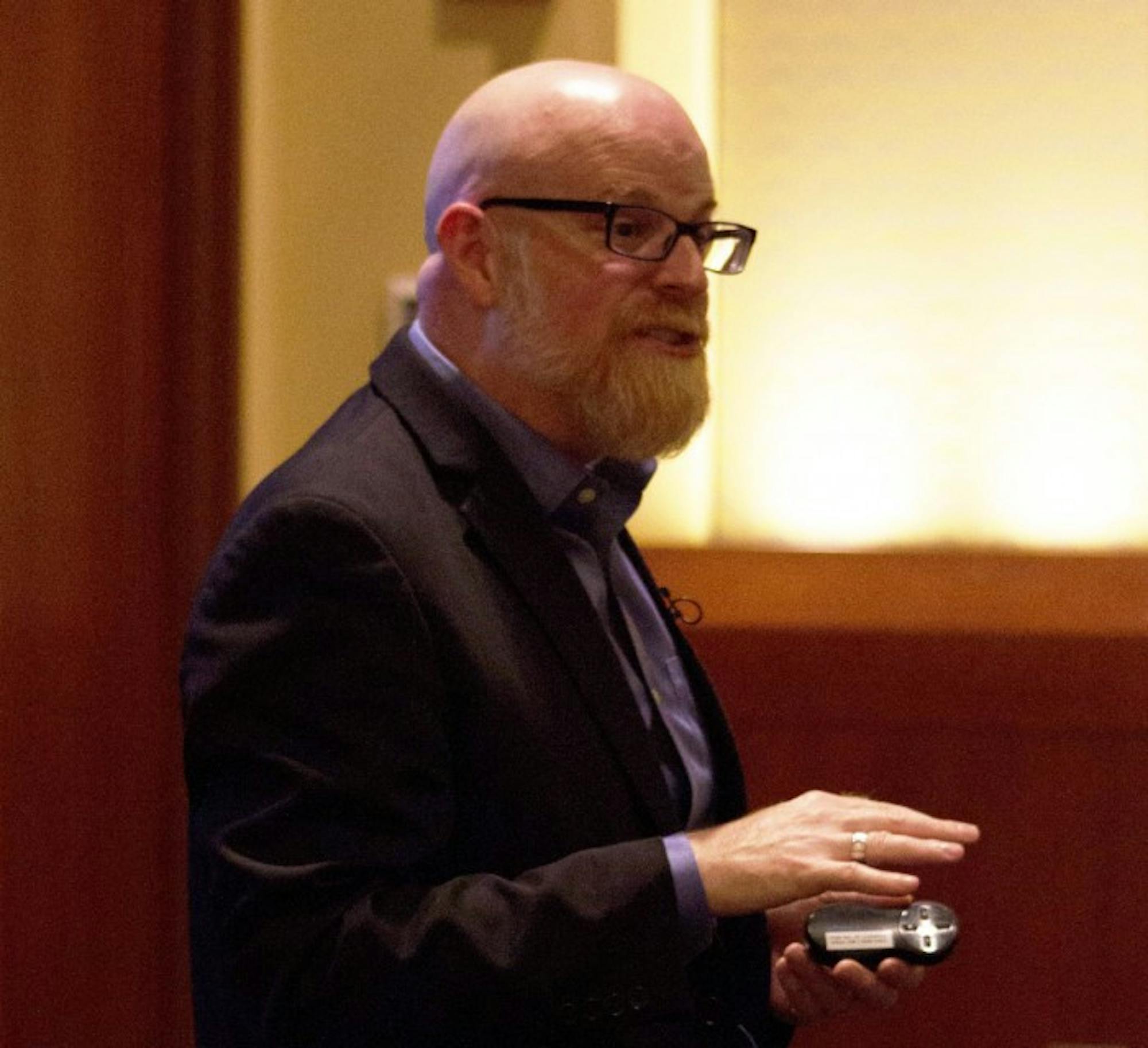Erik Hurst, a University of Chicago professor and macroeconomist, explained the 2000s decline in U.S. employment Thursday night in the Eck Center auditorium.
In the past 15 years, Hurst said, the annual hours worked by American men has declined by about 200 hours.
While Hurst is more concerned with the drastic employment decline in the less educated male demographic, he addressed the female workforce too. Hurst said the number of hours worked by women skyrocketed in 1900 and rose steadily throughout the entire century.
“However, after 2000, we start seeing the patterns of women’s change in employment that look closer to men — so the 2000s are the first decade where women’s labor force attachment has fallen aside from World War II,” Hurst said.
Hurst addressed two factors in determining theories for the employment change: declining labor demand and declining labor supply. His labor demand arguments stem from the fact that during this period, “wages have been going down for less educated workers.” More importantly, however, is the declining manufacturing sector, caused by both import competition from China and machinery being substituted for workers, he said.
“In both stories, U.S. manufacturing output plummeted during the early 2000s,” Hurst said. “So this tells us that part of the story for what is going on in the U.S. labor force is a decline in manufacturing during this time. The decline in manufacturing has put this downward pressure on less educated workers.”
Hurst said the 2000s marked a time when skills between declining sectors and growing sectors are non-transferable. Furthermore, it’s more difficult for the marginal person to acquire skills desired by the current labor market.
Hurst also addressed what he called the more “tangible” and fun part of his research in the declining labor supply evidence. In searching for an answer as to why men from ages 21-30 are working less, Hurst found that many men from 21-30 years old do not receive government transfers, meaning they are supported by their parents or live with them. Additionally, the valuation of leisure time has increased — especially with rapid technological advancements in the mid-2000s. Hurst said he specifically focuses on the medium of video games and how that has impacted this demographic in not seeking out work.
“Of that increase in leisure time for young men, almost all of it is in time spent on recreational computer activities, in particular, the video game component,” he said.













